
Tikrit Univercity Colledge of Medicene
Dr.Hind Mutar Ibrahim

Aim of lecture
Definition of low birth weight
Incidence of low birth weight
Causes and consequences of LBW
Prevention

Low birth weight has been defined by the
WHO as weight at birth of less than 2,500
grams (5.5 pounds).
This is based on epidemiological observations
that infants weighing less than 2,500 g are
approximately 20 times more likely to die than
heavier babies.

Very LBW is less than 1,500 g .
Extremely LBW is less than 1,000 g .

More than 20 million infants worldwide,
representing 15.5% of all births, are born LBW,
95.6 % in developing countries.
LBW is closely associated with: foetal and
neonatal mortality and morbidity, inhibited
growth and cognitive development, and
chronic diseases later in life.
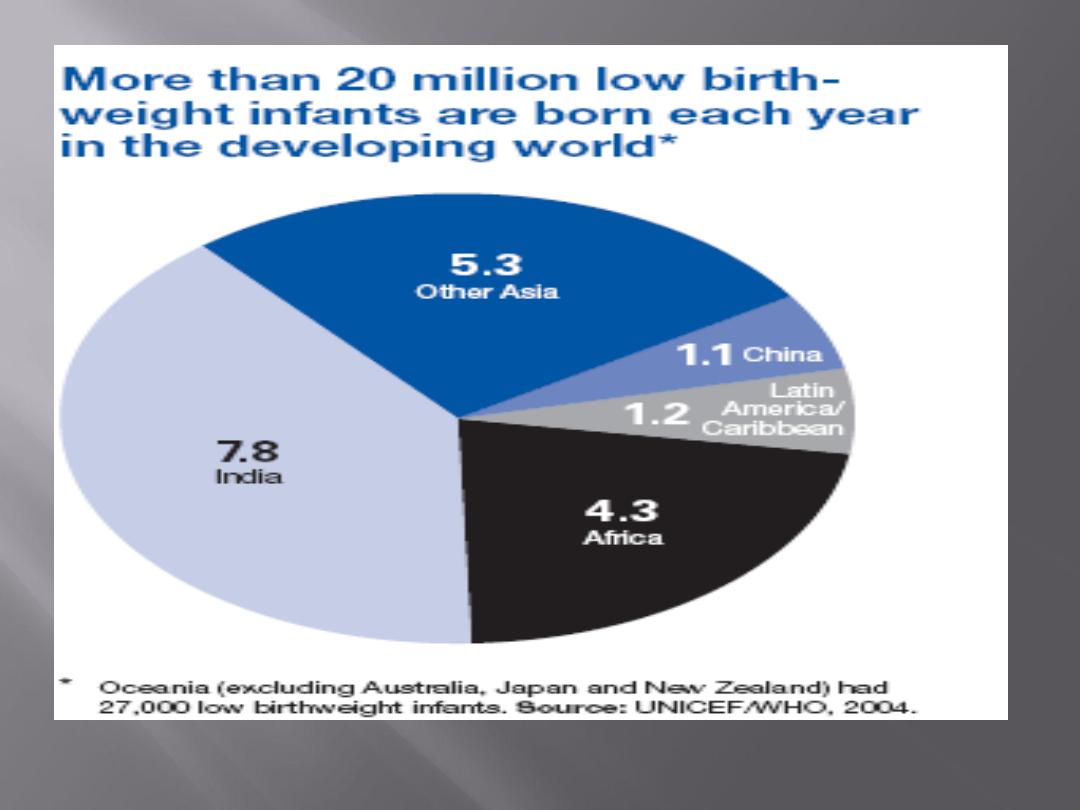

Mother's Malnutrition
Heavy work load
High blood pressure
Infection and diseases
Unregulated fertility.

Preterm babies
:
There are babies born too early before 37
weeks of gestation, their intrauterine growth
may be normal, that is their, weigh, length and
development may be within normal limit for
the duration of gestation.
Given good neonatal care, these babies can
catch up growth and by 2 to 3 years of age will
be of normal size and performance.

Approximately 2 thirds of all babies of LBW in
developed countries are estimated to be
preterm the causation of preterm babies is
multifactoral. There include multiple births,
hard physical works hypertensive disorders of
pregnancy. But it is often preventable by such
measures as good prenatal screening and care.

Small for dates (SFD):
These babies are result of intrauterine fetal
growth retardation.
The factors associated with intra uterine
growth retardation are multiple and
interrelated to mother, placenta or to foetus.
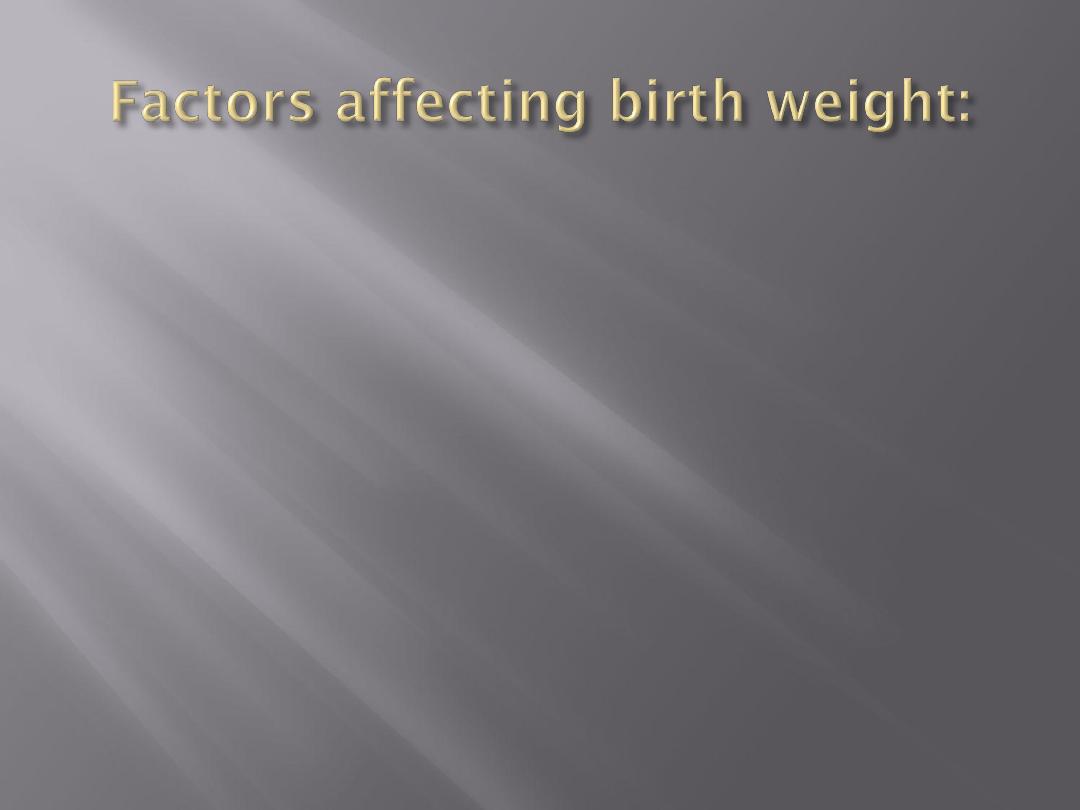
The maternal factors:
malnutrition.
Anaemia.
Heavy physical work-during pregnancy.
Hypertension.
Malaria.
Toxaemia.
Smoking.

Low economic status.
Short maternal stature.
Young age.
High parity.
Short birth spacing.
Low education status.

Placental insufficiency.
Placental abnormalities.

Foetal abnormality.
Intra uterine infections.
Chromosomal abnormalities.
Multiple gestation.

SFD babies has a high risk of dying not only
during the neonatal period but during their
infancy, thus significantly raising the rate of
infant and prenatal mortality.
Most of them become victims of protein
energy mal nutrition and infection.

LBW is one of the most serious challenges in
maternal and child health in develped and
developing countries.

Its high incidence.
Its association with mental retardation.
A high risk of prenatal and infant mortality
and morbidity.

The rates of LBW could not be reduced to more
than 10 percent in all parts of the world. There
is no universal solution,
interventions have to be case specific.

In recent years good attention has been given
to ways and means of preventing LBW through
good prenatal care and interventions
programmes rather than treatment of low birth
weigh babies born later.
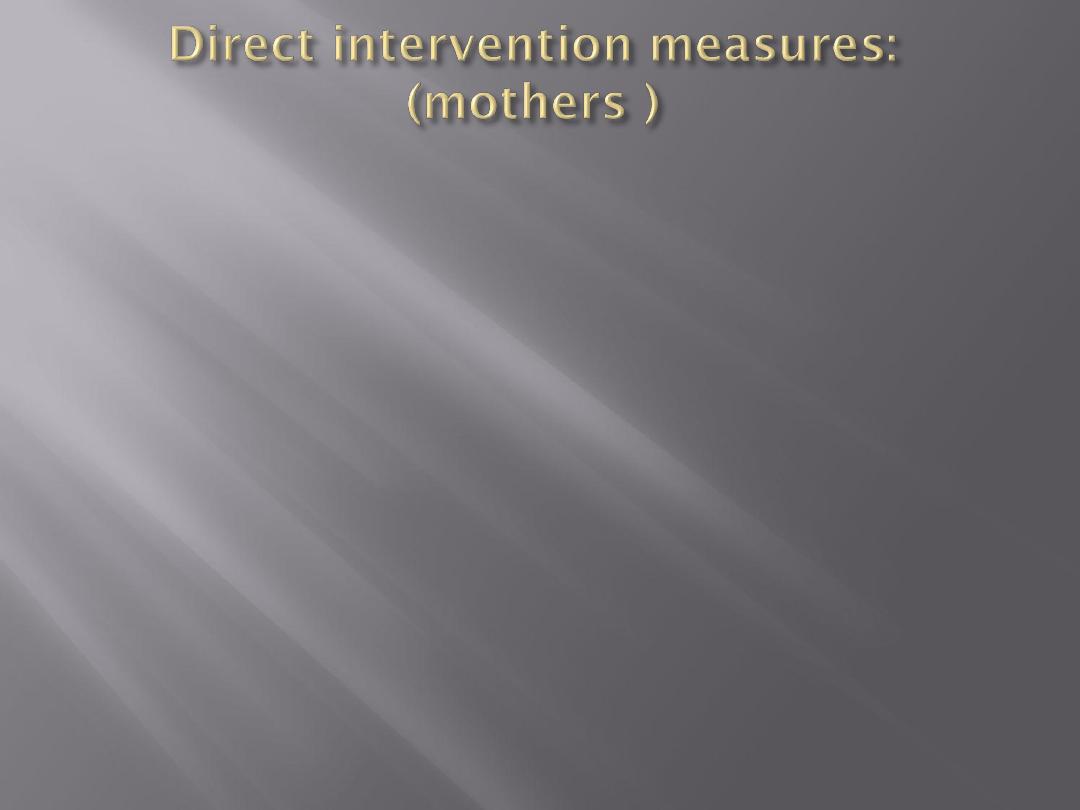
1.
Increasing food intake
2.
Controlling infection
3.
Early detection and treatment of medical
disorders

Indirect intervention:
1.
Family planning
2.
Improved sanitation
3.
Improving health and nutrition of young girls
4.
Improvement of socio-economic conditions

From the point of view of treatment. LBW
babies can be divided into 2 groups.
Those under 2 kg.
Those between 2 – 2.5 kg.
The first group require first class modern
neonatal care which is hardly available

globally in an intensive care unit their weight
reaches the weight of the second group.
The second group may need an intensive care
unit for a day or two.

The intensive care comprises of:
Incubatory care, that adjust temp, humility
oxegen supply (low levels of oxygen in the
blood steam can produce cerebral palsy. If it is
excessive leads to retinopathy and lung
toxicity.

Feeding: Nasal catheter.
Prevention of infection: Infection can cause
death in the first few hours such as respiratory
infection so prevention of infection is therefore
one of the most important functions of an
intensive care unit.
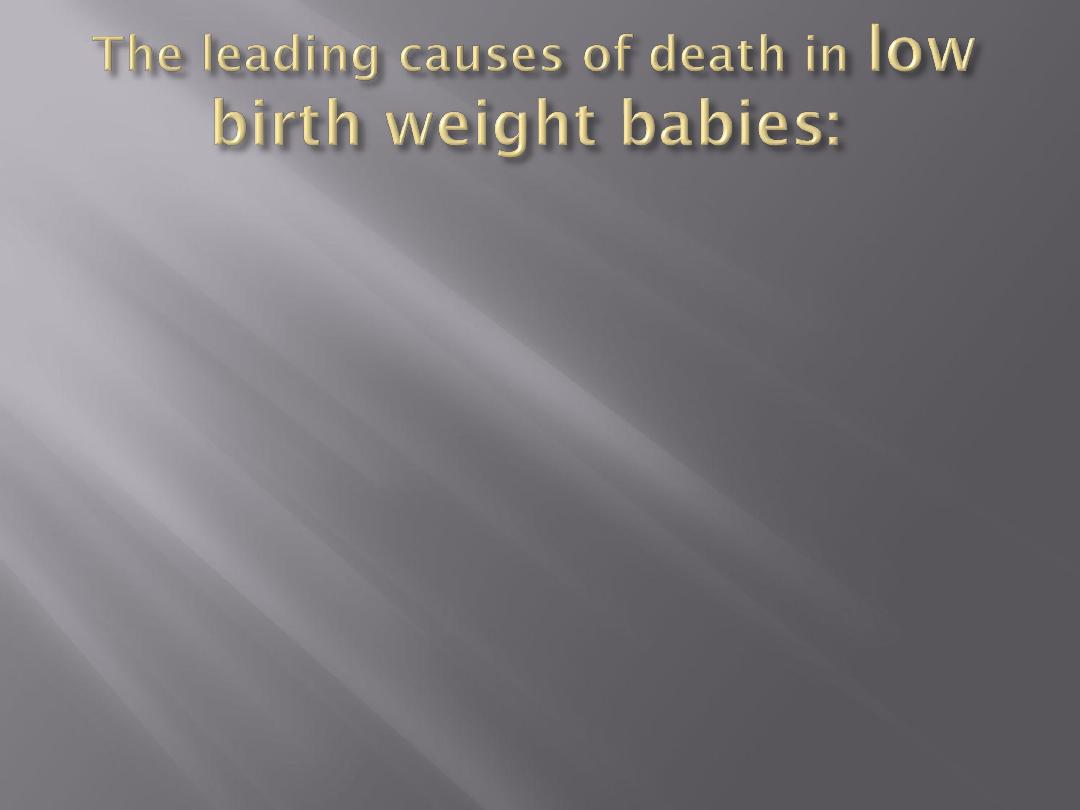
Atelectasia.
Malformation.
Pulmonary haemorrhage.
Intracranial bleeding.
Pneumonia and other infections.
The development of perinatal intensive care
units has been associated with a decline in
neonatal mortality.
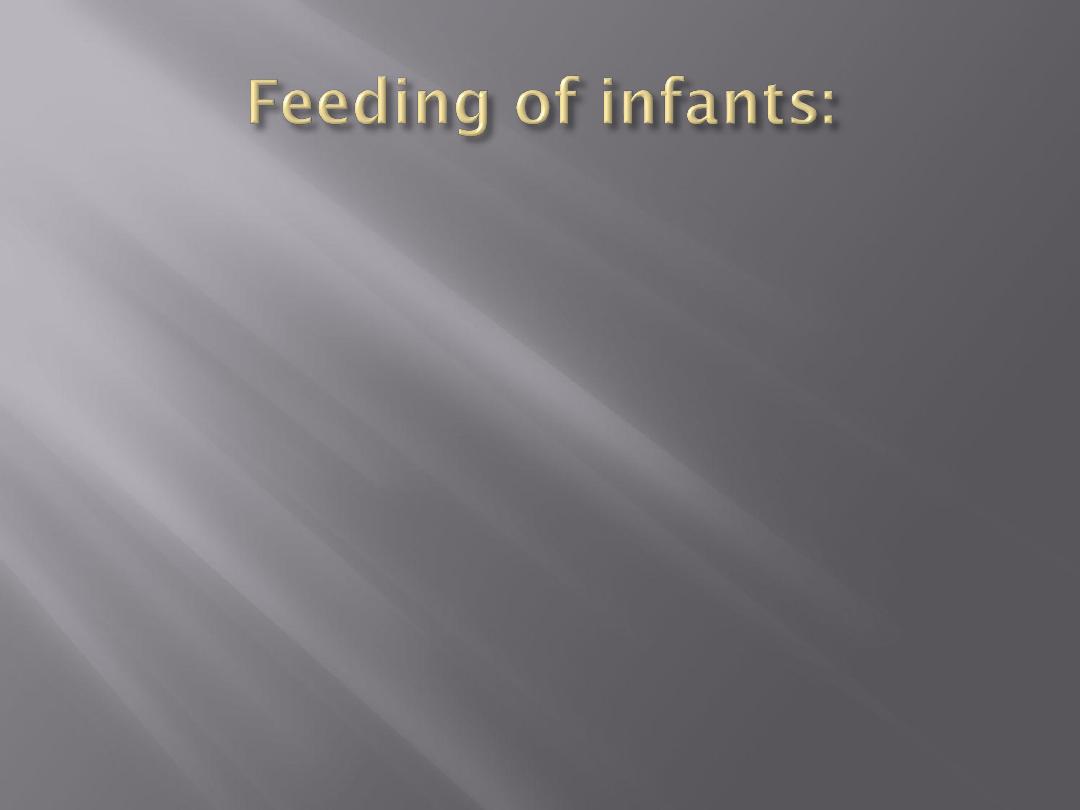
Breast feeding:
1.
Ideal
2.
Protect from infection and malnutrition
3.
Reduces infant mortality

Safe, clean ,cheap, and available in correct temp.
Meets nutritional requirement of infant in first
months of life
Antimicrobial factors
Easily digested ,has biochemical advantages.
Promotes bonding
Protects against obesity
Sucking is good for development of jaws & teeth
Prevents malnutrition
Child spacing

Dried milk,cow`s milk
Indications:
1.
Failure of breast milk
2.
Prolonged illness
3.
Death of mother

The practice of following a child’s physical
development, by regular measurement of certain
indicators (usually weight and sometimes
length) in order to maintain good health by
detecting growth faltering and intervening in a
timely manner
Nutrition Status – Is the balance between
nutrient intake and nutrient requirements
and/or the degree to which an individual’s
physiological needs for nutrients are being met
from the food they eat.

